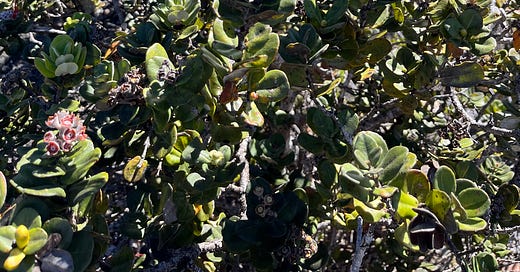Walking the path.
These last couple of weeks I have taken myself on some small pilgrimages near my home on Hawai’i island. It is so lovely to be exploring new lands with fresh eyes. I would often do this in Utah as well; long, slow saunters along paths, trails and sidewalks, no particular destination in mind, my senses open to the world around me, no…
Keep reading with a 7-day free trial
Subscribe to Conscious Coalition Community to keep reading this post and get 7 days of free access to the full post archives.




